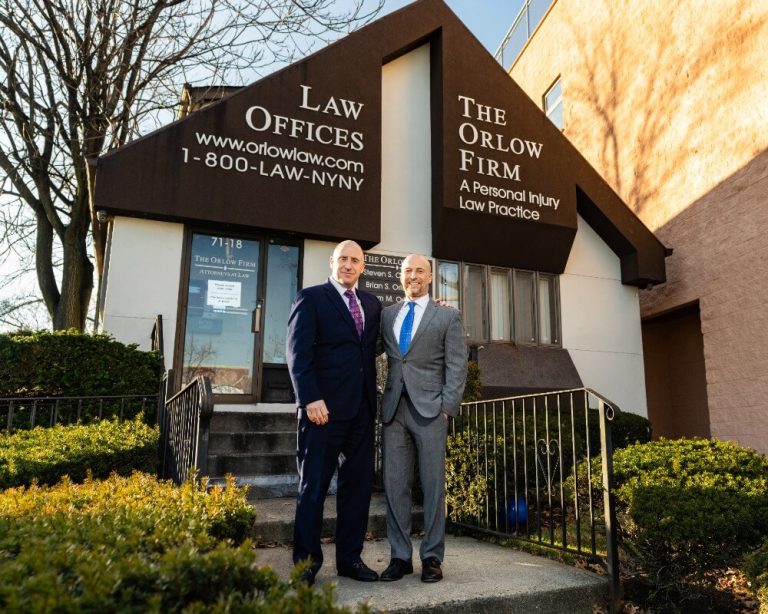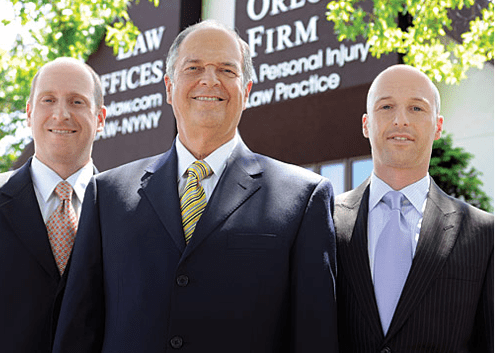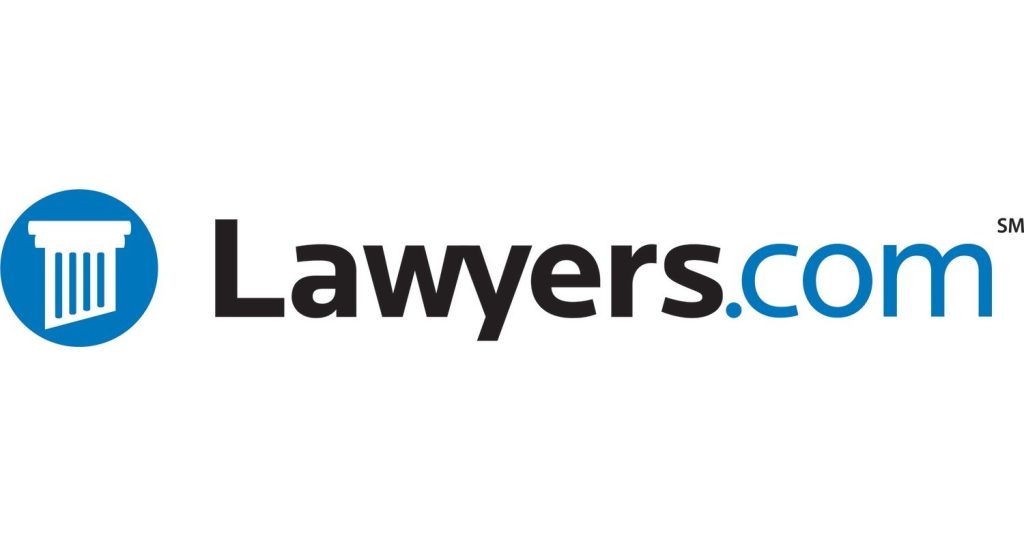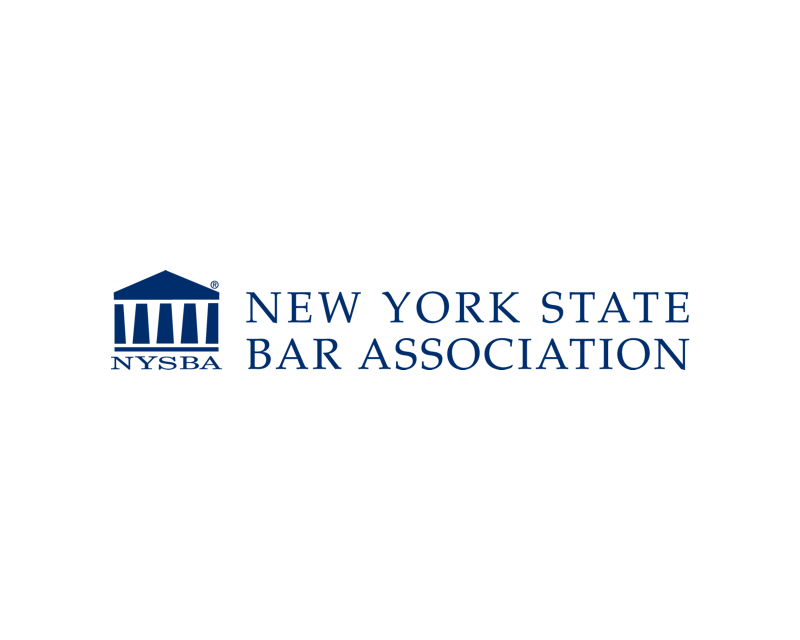The Following People Contributed to This Page
Cindy Cordova is a seasoned legal writer with over seven years of experience crafting clear, informative, and professional content for law firm websites. With a B.A. in English from Trinity Christian College, she combines her strong writing background with a deep understanding of legal topics to help firms connect with their clients through trustworthy and accessible content.
- May 26, 2025
What is Employer Negligence on Construction Sites?
Quick Answer: Employer negligence on construction sites in NYC can occur when employers fail to provide a safe working environment, which may include inadequate training, lack of safety equipment, or ignoring safety regulations, potentially leading to accidents and injuries. If you believe employer negligence contributed to a construction site injury, contact The Orlow Firm today to speak with our NYC construction accident lawyers a free confidential case evaluation at (646) 647-3398.
Common Causes of Employer Negligence in NYC Construction
In the bustling environment of New York City, construction sites are a common sight. However, they also pose significant risks, especially when employers fail to adhere to safety protocols. Understanding the common causes of employer negligence on construction sites can help workers and their families identify potential hazards and take action if necessary.
- Inadequate Training: Employers are responsible for ensuring that all workers receive proper training before they begin their tasks. This includes training on equipment use, safety procedures, and emergency protocols. When employers cut corners on training to save time or money, workers are left vulnerable to accidents and injuries.
- Insufficient Safety Equipment: Construction sites should be equipped with necessary safety gear such as helmets, harnesses, gloves, and goggles. Employer negligence often occurs when this equipment is not provided, is of poor quality, or is not replaced as needed, putting workers at risk of serious harm.
- Lack of Supervision: Proper supervision is critical in maintaining safety on construction sites. When employers fail to provide adequate oversight, workers may engage in unsafe practices or use equipment incorrectly, leading to preventable accidents.
- Poor Site Maintenance: A well-maintained construction site minimizes hazards. Employer negligence can manifest in the form of cluttered work areas, poorly maintained equipment, and failure to address known safety issues, all of which increase the likelihood of accidents.
- Ignoring Safety Regulations: Employers must comply with local, state, and federal safety regulations, including those set by the Occupational Safety and Health Administration (OSHA). Ignoring these regulations, whether out of ignorance or a desire to cut costs, puts workers in danger and can result in severe penalties.
- Pressure to Meet Deadlines: In the fast-paced environment of NYC construction, the pressure to meet tight deadlines can lead employers to prioritize speed over safety. This pressure can result in rushed work, skipped safety checks, and an increased risk of accidents.
Recognizing these common causes of employer negligence can empower construction workers to advocate for safer working conditions. If you suspect that your worksite is not adhering to safety standards, or if you have been injured due to employer negligence, it is crucial to seek legal guidance. Contact The Orlow Firm at (646) 647-3398 to discuss your situation with a dedicated personal injury attorney who can help you understand your rights and options.
Legal Obligations of Employers on Construction Sites
Employers on construction sites in New York City have specific legal obligations designed to ensure the safety and well-being of their workers. These obligations are critical in minimizing accidents and injuries, and they form the basis for assessing employer negligence if an accident occurs. Understanding these duties can help workers identify potential violations and take appropriate action.
- Provide a Safe Working Environment – Employers in New York must provide a workplace free from recognized hazards under federal OSHA regulations (29 U.S. Code § 654) and New York Labor Law § 200. This involves regular inspections of the construction site to identify and rectify any potential hazards. Safety measures should be consistently updated to match the evolving nature of the construction site.
- Compliance with OSHA Standards – The Occupational Safety and Health Administration (OSHA) sets forth regulations that employers must follow to ensure workplace safety. These include guidelines on the use of machinery, handling of hazardous materials, and protective equipment. Employers are legally obligated to comply with OSHA construction safety standards as codified in 29 CFR Part 1926 to minimize risk of workplace injuries.
- Proper Training and Supervision – Employers must provide adequate training to all employees, ensuring they are aware of the risks and the correct procedures to minimize them. This includes training on the proper use of equipment and safety protocols. Additionally, adequate supervision is essential to ensure that safety practices are followed at all times.
- Provision of Personal Protective Equipment (PPE) – Employers are responsible for supplying appropriate personal protective equipment, such as helmets, gloves, and harnesses, and ensuring that workers use them correctly. PPE is a critical component in protecting workers from potential injuries on construction sites.
- Implementation of Safety Programs – Safety programs, including emergency response plans and regular safety meetings, should be in place to educate workers on how to handle accidents and emergencies. These programs are essential for fostering a culture of safety and preparedness among workers.
- Reporting and Record Keeping – Employers must report fatalities within 8 hours and in-patient hospitalizations, amputations, or loss of an eye within 24 hours per 29 CFR § 1904.39. Employers are also required to maintain injury and illness records under 29 CFR Part 1904. This transparency is crucial for identifying patterns that could indicate systemic safety issues.
If you or someone you know suspects employer negligence on a construction site in New York City, it is important to take action. Understanding these legal obligations can be the first step in addressing potential safety violations. For personalized guidance on your specific situation, contact The Orlow Firm at (646) 647-3398 to speak with our dedicated legal team.
Recognizing Signs of Employer Negligence on Construction Projects
Employer negligence on construction sites can lead to serious safety hazards and accidents. Recognizing the signs of such negligence is crucial for workers and their families to take timely action. Below are key indicators that may suggest employer negligence on a construction project:
- Lack of Proper Safety Equipment: Employers are responsible for providing adequate safety gear, such as helmets, gloves, and harnesses. If workers are not equipped with or trained to use these essentials, it may indicate negligence.
- Inadequate Training: Proper training on equipment use, emergency procedures, and safety protocols is essential. An absence of comprehensive training programs or refresher courses can be a red flag.
- Poor Site Maintenance: Unsafe working conditions, such as unmarked hazards, cluttered walkways, or faulty machinery, suggest a disregard for safety standards.
- Ignoring Safety Regulations: Employers must adhere to local, state, and federal safety regulations, including those set by the Occupational Safety and Health Administration (OSHA). Frequent violations or fines may indicate negligence.
- Failure to Conduct Safety Inspections: Regular safety inspections are crucial to identify and mitigate potential hazards. If inspections are infrequent or not documented, this could be a sign of negligence.
- Lack of Emergency Preparedness: Employers should have clear emergency procedures in place, including first aid supplies and trained personnel. The absence of such measures can endanger workers.
- High Rate of Accidents or Near Misses: A pattern of accidents or close calls might indicate systemic issues with safety management that need to be addressed.
- Poor Communication: Effective communication is vital for safety. If workers are not informed about potential risks or changes in procedures, it may point to negligence.
Recognizing these signs early can help prevent accidents and protect workers’ rights. If you suspect employer negligence on a construction site, it’s important to take action. Document your observations, report concerns to a supervisor or safety officer, and consult with legal professionals if necessary. For guidance tailored to your situation, contact The Orlow Firm at (646) 647-3398 to discuss your concerns with our dedicated team.
Impact of Employer Negligence on Construction Workers Safety
When employer negligence occurs on construction sites, the impact on workers’ safety can be significant and far-reaching. Construction sites are inherently risky environments, and negligence can exacerbate these risks, leading to serious injuries or even fatalities.
Employer negligence can manifest in various ways that directly affect the safety of construction workers. Some of the common impacts include:
- Increased Risk of Accidents: Negligence in enforcing safety protocols or providing adequate safety equipment can lead to accidents such as falls, electrocutions, or being struck by objects. These incidents are often preventable with proper safety measures.
- Inadequate Training: Employers have a responsibility to ensure that their workers are properly trained to handle the equipment and materials they work with. Failure to provide adequate training can result in workers being unprepared to safely perform their duties, increasing the likelihood of accidents.
- Lack of Safety Equipment: Essential protective gear like helmets, harnesses, and gloves are crucial for worker safety. If employers fail to supply or maintain this equipment, workers are exposed to greater risks of injury.
- Unsafe Working Conditions: Employers are tasked with maintaining a safe work environment. This includes ensuring that scaffolding is secure, machinery is well-maintained, and hazardous materials are handled safely. Negligence in these areas can lead to dangerous working conditions.
- Delayed Emergency Response: In the event of an accident, a swift and effective emergency response is critical. Employer negligence in planning or executing emergency procedures can result in delayed medical attention, exacerbating injuries.
In New York City, where construction is a constant presence, the implications of employer negligence are particularly acute. The city’s dense urban environment means that accidents can also pose risks to the public, adding an additional layer of responsibility for employers.
For construction workers, understanding these impacts is crucial. If you suspect that employer negligence has compromised safety on a construction site, taking action is essential. Document any unsafe conditions and report them to a supervisor. If you are injured, seek medical attention immediately and consider consulting with a legal professional to explore your options.
At The Orlow Firm, we understand the complexities involved in employer negligence cases on construction sites. If you or a loved one has been affected, our team is here to help you navigate your legal rights. Contact us at (646) 647-3398 for a consultation.
Steps to Take if You Suspect Employer Negligence
If you suspect employer negligence on a construction site, taking immediate and informed steps is crucial to protect your rights and ensure your safety. Below is a guide on what actions to consider if you find yourself in this situation:
- Prioritize Safety: First and foremost, ensure your immediate safety and the safety of your coworkers. If you notice a hazardous condition, report it to your supervisor and remove yourself from the dangerous area if possible.
- Document the Conditions: Use your smartphone or a camera to take photos and videos of the unsafe conditions. Capture details such as defective equipment, lack of safety gear, or inadequate signage. Visual evidence can be crucial in supporting any future claims.
- Report the Issue: Notify your supervisor or site manager about the unsafe conditions. It’s important to follow the proper chain of command as outlined by your employer’s safety protocol. Ensure that your report is documented in writing, either through an email or a formal incident report.
- Keep a Record: Maintain a detailed log of all safety concerns, including dates, times, and any responses or lack thereof from management. This record can be invaluable if you need to demonstrate a pattern of negligence.
- Consult OSHA Guidelines: Familiarize yourself with Occupational Safety and Health Administration (OSHA) regulations relevant to your situation. Understanding these guidelines can help you identify specific violations and strengthen your case.
- Speak with Coworkers: If possible, discuss the situation with coworkers to see if they have noticed similar issues. Having multiple accounts can help corroborate your observations and concerns.
- Contact a Legal Professional: If the issue persists or if you feel that your safety is compromised, consider reaching out to a legal professional. A knowledgeable attorney can provide guidance on how to proceed and help protect your rights. For assistance in New York City, you can contact The Orlow Firm at (646) 647-3398.
- File a Complaint with OSHA: If your employer fails to address the safety issues, you have the right to file a complaint with OSHA. This can prompt an official investigation into the worksite conditions.
Taking these steps not only helps in addressing immediate safety concerns but also ensures that you have a robust foundation should you decide to pursue legal action for employer negligence. Remember, your safety and well-being are paramount, and there are legal avenues available to help you address unsafe working conditions.
Employer Negligence and Workers Compensation in New York
In the bustling environment of New York City’s construction industry, understanding how employer negligence intersects with workers’ compensation is crucial for anyone working in or around construction sites. Workers’ compensation is a form of insurance that provides wage replacement and medical benefits to employees injured in the course of employment. However, when employer negligence contributes to a construction site accident, it can complicate the straightforward application of workers’ compensation benefits.
Workers’ Compensation Basics in New York
New York State requires virtually all employers to provide workers’ compensation coverage under WCL § 50. This insurance is intended to cover medical expenses and a portion of lost wages for workers injured on the job, regardless of who was at fault. This no-fault system ensures that employees receive necessary support without the need for lengthy lawsuits.
- Medical Benefits : Covers necessary medical treatment related to the injury.
- Wage Replacement : Provides a percentage of the worker’s average weekly wage during the period of disability.
- Rehabilitation Services : Includes vocational rehabilitation if the injury results in a disability that prevents returning to the previous job.
Employer Negligence and Its Impact
While workers’ compensation is generally the exclusive remedy for injured workers, there are circumstances where employer negligence may allow for additional legal action. In New York, workers’ compensation is generally the exclusive remedy, but personal injury lawsuits may be permitted in cases involving third-party negligence or violations of NY Labor Law §§ 240 or 241. Willful employer misconduct does not automatically create a right to sue unless it meets exceptions under case law or statute.
- Failure to Provide Safety Equipment : If an employer neglects to provide necessary safety gear, such as helmets or harnesses, and this leads to an injury, it could be considered negligence.
- Ignoring Safety Regulations : Violating Occupational Safety and Health Administration (OSHA) regulations can be evidence of negligence if it results in worker injuries.
- Lack of Training : Inadequate training for handling machinery or hazardous materials can lead to accidents attributable to employer negligence.
Legal Options Beyond Workers’ Compensation
In cases where employer negligence is evident, workers may have the option to pursue additional compensation through a personal injury lawsuit. This can include claims for pain and suffering, which are not covered under workers’ compensation. It’s important to note that pursuing such a claim can be complex and requires proving the employer’s negligence directly contributed to the injury.
Consulting with a Legal Professional
If you suspect employer negligence in your construction site accident, consulting with a knowledgeable attorney can help clarify your rights and options. Legal professionals can assist in determining the viability of a personal injury lawsuit and guide you through the process of claiming the compensation you deserve.
At The Orlow Firm, our attorneys are dedicated to helping injured workers navigate the complexities of workers’ compensation and employer negligence claims. If you believe employer negligence played a role in your construction site accident, contact us at (646) 647-3398 for a consultation. We are here to provide the support and guidance you need.
How to Prove Employer Negligence in Construction Site Accidents
Proving employer negligence in construction site accidents involves demonstrating that the employer failed to fulfill their legal obligations, leading to unsafe conditions that resulted in injury. Here’s how you can establish a case for employer negligence:
- Establish Duty of Care: Employers on construction sites have a legal duty to provide a safe working environment. This includes ensuring that safety regulations are followed, providing proper training, and maintaining equipment. Demonstrating that the employer had this responsibility is the first step.
- Show Breach of Duty: You must provide evidence that the employer breached their duty of care. This could involve proving that safety protocols were ignored, equipment was not maintained, or adequate training was not provided. Documentation such as safety inspection reports, training records, and eyewitness testimonies can be crucial here.
- Link Breach to Injury: It’s essential to establish a direct connection between the employer’s breach of duty and the injury sustained. This means showing that the unsafe conditions directly caused the accident. Medical records detailing the injury and expert testimonies can help in making this connection clear.
- Demonstrate Damages: Finally, you need to prove that the injury resulted in damages, which can include medical expenses, lost wages, and pain and suffering. Keep detailed records of all medical treatments, time off work, and any other related expenses to support your claim.
In New York City, construction sites are subject to specific laws and regulations, such as the New York Labor Law, which includes provisions that protect workers. Understanding these laws can strengthen your case. For instance, Labor Law Section 240, also known as the “Scaffold Law,” imposes strict liability on employers for elevation-related injuries, which can simplify proving negligence in such cases.
If you suspect employer negligence led to a construction site accident, gathering evidence promptly is crucial. Document everything related to the incident, including taking photos of the scene and securing witness statements. Consulting with a knowledgeable personal injury attorney can also provide guidance on navigating the complexities of proving negligence and help build a robust case.
For those affected by construction site accidents in NYC, understanding how to prove employer negligence is vital for securing the compensation you deserve. If you need assistance or have questions about your situation, contact The Orlow Firm at (646) 647-3398 for a consultation with our dedicated legal team.
Employer Negligence vs. General Contractor Liability
Understanding the distinction between employer negligence and general contractor liability is critical when addressing construction site accidents in New York City. Both parties have distinct roles and responsibilities, and determining who is liable depends on the specific circumstances of each case.
Employer Negligence refers to a situation where an employer fails to provide a safe working environment for their employees. This can include failing to maintain equipment, not providing adequate safety training, or neglecting to enforce safety protocols. Under New York labor laws, employers are required to comply with safety standards to protect their workers. If they fail to meet these obligations and an accident occurs, they can be held liable for injuries sustained by their employees.
General Contractor Liability, on the other hand, involves the responsibility of the general contractor who oversees the entire construction project. General contractors are typically responsible for ensuring that the worksite is safe for all workers, including those hired by subcontractors. Their duties include coordinating between different parties, maintaining overall site safety, and ensuring compliance with safety regulations. If a general contractor fails to uphold these responsibilities and an accident occurs, they can also be held liable.
Here are some key differences and overlaps between employer negligence and general contractor liability:
- Scope of Responsibility : Employers are primarily responsible for their direct employees, while general contractors have a broader duty to ensure the safety of the entire construction site.
- Safety Protocols : Employers must provide specific safety training and equipment to their workers, whereas general contractors are responsible for enforcing overall site safety standards.
- Contractual Obligations : The liability of a general contractor may be influenced by the terms of their contract, which can specify safety responsibilities and the extent of their oversight on the project.
- Liability in Accidents : Both employers and general contractors can be held liable in the event of an accident, depending on who failed to uphold their safety responsibilities. In some cases, both parties may share liability.
Understanding the nuances between employer negligence and general contractor liability is crucial for workers seeking compensation after a construction site accident. If you or a loved one has been injured on a construction site, determining the liable party can be complex. For guidance tailored to your specific situation, contact The Orlow Firm at (646) 647-3398. Our team is dedicated to helping you navigate your legal options and protect your rights.
The Role of OSHA in Preventing Employer Negligence
The Occupational Safety and Health Administration (OSHA) plays a crucial role in preventing employer negligence on construction sites. As a federal agency under the U.S. Department of Labor, OSHA is responsible for ensuring safe and healthy working conditions by setting and enforcing standards. Understanding OSHA’s role and how it impacts construction safety in New York City can help workers and employers alike recognize and mitigate potential hazards.
OSHA Standards and Regulations
OSHA sets forth a comprehensive set of regulations specifically designed for the construction industry. These standards cover a wide range of safety concerns, including but not limited to:
- Fall Protection: One of the leading causes of construction site injuries is falls. OSHA mandates fall protection at elevations of 6 feet in the construction industry per 29 CFR § 1926.501.
- Scaffolding Safety: Proper scaffolding setup and use are critical to preventing accidents. Scaffolding must meet the standards outlined in 29 CFR § 1926 Subpart L. This includes strength requirements, guardrails, and proper access.
- Hazard Communication: Under OSHA’s Hazard Communication Standard (29 CFR § 1910.1200), employers must develop and implement a written hazard communication program, including labels, safety data sheets, and training.
- Personal Protective Equipment (PPE): Employers must provide appropriate PPE, such as hard hats, gloves, and eye protection, to shield workers from potential hazards.
OSHA Inspections and Enforcement
To enforce these standards, OSHA conducts regular inspections of construction sites. These inspections may be planned or arise from complaints and reports of unsafe conditions. During an inspection, OSHA officials will:
- Examine workplace conditions to ensure compliance with OSHA standards.
- Identify potential hazards and suggest corrective actions.
- Issue citations and fines for non-compliance, which can incentivize employers to adhere to safety regulations.
Training and Education
OSHA also provides training and educational resources to help employers and employees understand and implement safety practices. Programs are available that focus on specific areas such as fall prevention, electrical safety, and proper equipment use. These resources are vital in fostering a culture of safety awareness on construction sites.
Impact on NYC Construction Sites
In a bustling city like New York, where construction activity is constant, OSHA’s role is especially critical. The agency’s regulations and oversight help reduce the risk of accidents and injuries, ultimately saving lives. By ensuring that employers comply with safety standards, OSHA contributes to creating safer working environments for construction workers.
If you suspect that your construction site does not meet OSHA standards or if you’ve been injured due to unsafe conditions, it’s important to take action. For legal guidance and to discuss your specific situation, contact The Orlow Firm at (646) 647-3398. Our team is dedicated to helping you understand your rights and pursue the compensation you deserve.
Seeking Legal Assistance for Employer Negligence Cases in NYC
In the fast-paced and demanding environment of New York City construction sites, employer negligence can have severe consequences for workers. If you or a loved one has been injured due to employer negligence on a construction site, seeking legal assistance is a crucial step toward securing the compensation you deserve. Understanding how to navigate this process can make a significant difference in the outcome of your case.
Why Legal Assistance is Essential
Construction site accidents often involve complex legal and regulatory issues. Employers are required to adhere to strict safety standards set by agencies like the Occupational Safety and Health Administration (OSHA). When these standards are not met, and negligence occurs, it can result in serious injuries or even fatalities. A knowledgeable attorney can help you understand your rights and the legal obligations of your employer, ensuring that you have a solid foundation for your case.
What a Construction Accident Lawyer Can Do for You
- Evaluate Your Case: An attorney will assess the details of your accident to determine if employer negligence was a factor. This includes reviewing safety records, accident reports, and any violations of safety regulations.
- Gather Evidence: Building a strong case requires substantial evidence. Your lawyer will collect all necessary documentation, including witness statements, medical records, and expert testimony, to support your claim.
- Navigate Workers’ Compensation: In New York, workers’ compensation provides the exclusive remedy for most workplace injuries in New York, unless a third party is liable or a statutory exception applies. However, if employer negligence is proven, additional compensation may be available. An attorney can help you explore all avenues for recovery.
- Negotiate with Insurance Companies: Insurance companies often aim to minimize payouts. A legal professional can negotiate on your behalf to ensure you receive fair compensation for medical expenses, lost wages, and other damages.
- Represent You in Court: If a fair settlement cannot be reached, your attorney will be prepared to take your case to court, advocating for your rights and pursuing the compensation you deserve.
Choosing the Right Legal Representation
When seeking legal assistance for employer negligence cases in New York City, it’s important to select a firm with experience in construction accident cases. Look for attorneys who demonstrate a commitment to client advocacy and a deep understanding of the complexities involved in these cases.
If you suspect employer negligence led to your injury on a construction site, don’t hesitate to reach out for legal guidance. The Orlow Firm is dedicated to helping injured workers navigate their legal options and obtain the compensation they need to recover. For a consultation, please contact us at (646) 647-3398. We are here to support you every step of the way.
The Following People Contributed to This Page
Cindy Cordova is a seasoned legal writer with over seven years of experience crafting clear, informative, and professional content for law firm websites. With a B.A. in English from Trinity Christian College, she combines her strong writing background with a deep understanding of legal topics to help firms connect with their clients through trustworthy and accessible content.











